Response Letter Template
[Your Name]
[Your Title/Position]
[Your Organization]
[Your Address]
[City, State, ZIP Code]
[Email Address]
[Phone Number]
[Date]
[Recipient's Name]
[Recipient's Title/Position]
[Recipient's Organization]
[Recipient's Address]
[City, State, ZIP Code]
Subject: Re: [Subject of the Original Letter]
Dear [Recipient's Name],
I hope this letter finds you well. I am writing in response to your correspondence dated [Date of the original letter], in which you [briefly summarize the main points or concerns raised in the original letter].
I would like to take this opportunity to address the matters you have raised:
1. [Address the first concern or topic from the original letter]. Here, you can provide relevant information, explanations, or any actions that have been taken to address the issue.
2. [Address the second concern or topic from the original letter]. Similarly, provide relevant information, explanations, or updates regarding this issue.
3. [Continue addressing any additional concerns or topics as needed].
Please be assured that [Your Organization] takes [Recipient's Concerns/Subject] seriously, and we are committed to ensuring a satisfactory resolution. We greatly value your feedback, and your insights will help us enhance our [product/service/operations] to better meet the needs of our valued customers/clients.
If you require further clarification or have any additional questions, please do not hesitate to reach out to our dedicated [Customer Support/Department] at [Customer Support Email/Phone Number]. We are always available to assist you.
Once again, thank you for bringing these matters to our attention. We genuinely appreciate your feedback and the opportunity to improve our [product/service/operations].
Sincerely,
[Your Handwritten Signature if sending a physical letter]
[Your Typed Name]
[Your Title/Position]
[Your Contact Information]
Formal Response Letter to Inquiry
Dear [Recipient Name],
Thank you for your recent inquiry regarding [subject or matter]. We have reviewed your request and are pleased to provide the information you requested.
Should you require further clarification or additional details, please do not hesitate to contact us.
Sincerely,
[Your Name]
[Position]
[Company Name]
Professional Response to Job Application
Dear [Applicant Name],
Thank you for submitting your application for the position of [Job Title] at [Company Name]. We have reviewed your qualifications and experience, and we are pleased to invite you for an interview on [Date] at [Time].
Please confirm your availability at your earliest convenience.
Best regards,
[HR Name]
[Company Name]
Casual Email Response to Client Request
Hi [Client Name],
Thanks for reaching out regarding [topic]. We’ve gone over your request and are happy to move forward as discussed. Let us know if you have any further questions or changes.
Looking forward to working with you.
Cheers,
[Your Name]
Heartfelt Thank You Response Letter
Dear [Recipient Name],
I sincerely appreciate your thoughtful message and kind words regarding [subject]. Your feedback means a great deal, and I am grateful for your support and encouragement.
Thank you once again, and I look forward to continuing our collaboration.
Warm regards,
[Your Name]
Preliminary Response Letter
Dear [Recipient Name],
We acknowledge receipt of your correspondence regarding [subject]. At this stage, we are reviewing the matter and will provide a detailed response shortly.
Thank you for your patience.
Kind regards,
[Your Name]
[Position]
[Company Name]
Quick Email Response
Hi [Recipient Name],
Thanks for your message. We’ve received it and will respond with the required information soon.
Best,
[Your Name]
What is a Response Letter and Why You Might Need It
A Response Letter is a formal or informal written reply to a message, request, or inquiry.
Purpose:
- Acknowledge receipt of correspondence.
- Provide answers, clarification, or feedback.
- Maintain professional or personal communication etiquette.
- Ensure a clear record of communication.
Who Should Send a Response Letter
- Business professionals replying to clients, partners, or employees.
- HR or administrative staff responding to applications or inquiries.
- Individuals responding to personal, formal, or official communications.
- Managers or team leads providing feedback or confirmation.
Whom Should Receive a Response Letter
- Individuals or organizations that have made a request or inquiry.
- Job applicants, clients, or stakeholders expecting official communication.
- Colleagues or employees seeking information, clarification, or acknowledgment.
- Any party awaiting confirmation, feedback, or guidance.
When to Send a Response Letter
- Upon receiving a formal inquiry or request.
- After evaluating submitted applications or proposals.
- Following receipt of customer or client messages.
- As part of follow-up for feedback, complaints, or suggestions.
- When clarification or additional communication is necessary.
How to Write and Send a Response Letter
- Review the original message carefully to understand the request.
- Determine the appropriate tone: formal, professional, casual, or heartfelt.
- Begin with an acknowledgment of receipt.
- Address all points or questions raised.
- Conclude with a clear next step or closing remark.
- Choose mode: printed letter for formal cases, email for digital communication.
Requirements and Prerequisites Before Writing
- Complete understanding of the subject matter or request.
- Access to any necessary documents or information for accurate response.
- Confirmation of internal approvals if required.
- Recipient’s correct contact details or mailing address.
- Clear knowledge of tone and style appropriate for the situation.
Formatting Guidelines for Response Letters
- Length: Typically 1–3 paragraphs for brevity and clarity.
- Tone: Formal for professional cases, casual for informal communication.
- Wording: Polite, clear, and precise.
- Structure: Acknowledge, respond, and close with next steps.
- Mode: Letter format for official purposes, email for digital replies.
- Etiquette: Timely delivery and correct addressing are crucial.
After Sending / Follow-up Actions
- Confirm receipt if necessary, especially for official communications.
- Track deadlines or action items mentioned in the response.
- Maintain a copy for record-keeping and future reference.
- Be prepared to respond to follow-up inquiries or clarifications.
Common Mistakes to Avoid in Response Letters
- Failing to address all points or questions.
- Using unclear or ambiguous language.
- Delaying the response unnecessarily.
- Using inappropriate tone for the recipient.
- Omitting essential information like dates, contact info, or next steps.
Essential Elements and Structure of a Response Letter
- Greeting: Personalized if possible.
- Acknowledgment: Recognize receipt of original communication.
- Response Content: Provide clear answers, information, or feedback.
- Next Steps or Closing Remarks: Specify follow-up actions or offer assistance.
- Signature: Include sender’s name, position, and contact details.
- Optional Attachments: Include relevant documents or supporting information.
Tricks and Tips for Writing an Effective Response Letter
- Summarize key points from the original message to show understanding.
- Keep sentences short and precise to enhance readability.
- Use polite and professional tone regardless of situation.
- Include references to any attachments or related documents.
- Proofread for grammar, spelling, and factual accuracy.
Compare and Contrast Response Letters with Other Communication
- Response vs. Acknowledgment Letter: Acknowledgment only confirms receipt; response provides full answers or action.
- Response vs. Complaint Reply: Complaint replies may require apology or mitigation; response letters may simply provide requested info.
- Response vs. Follow-up Email: Follow-ups seek further action; responses address the initial query or request.
FAQ About Response Letters
Q: Can a response be sent digitally?
A: Yes, emails or messages are widely acceptable, but formal cases may require printed letters.
Q: How soon should I respond?
A: As promptly as possible, ideally within 24–48 hours for professional communications.
Q: Do all response letters need to be detailed?
A: Not always; keep the level of detail appropriate to the request or inquiry.

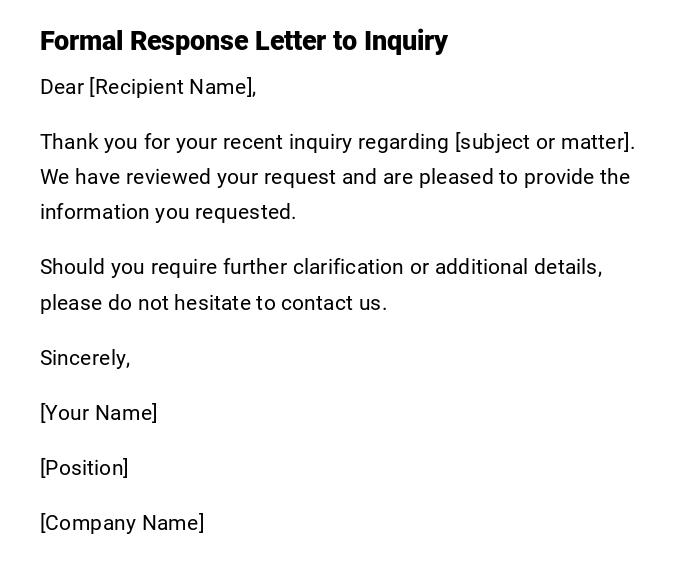
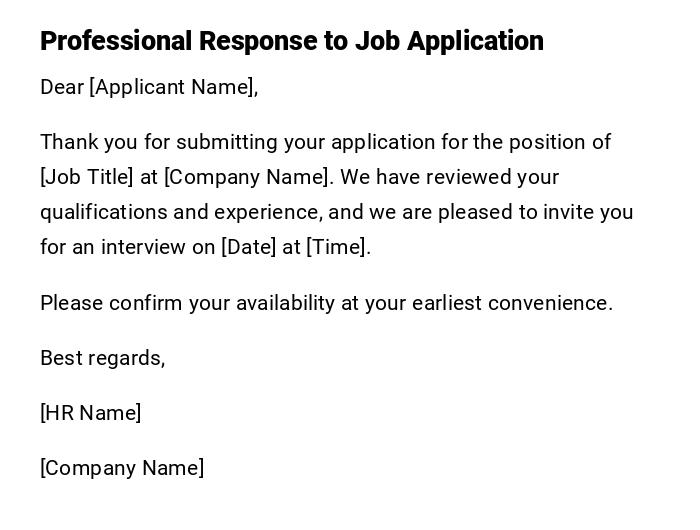
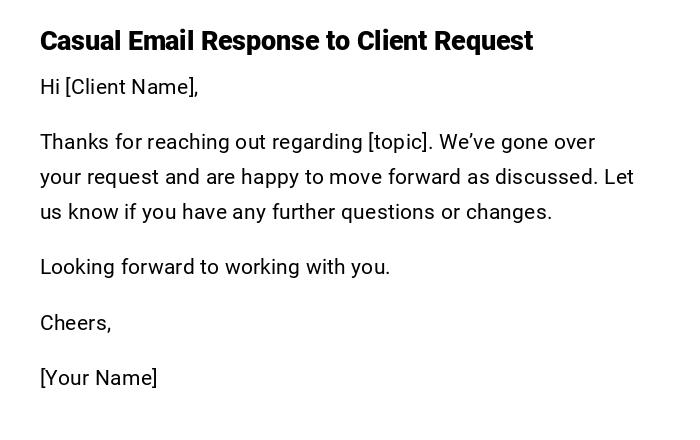
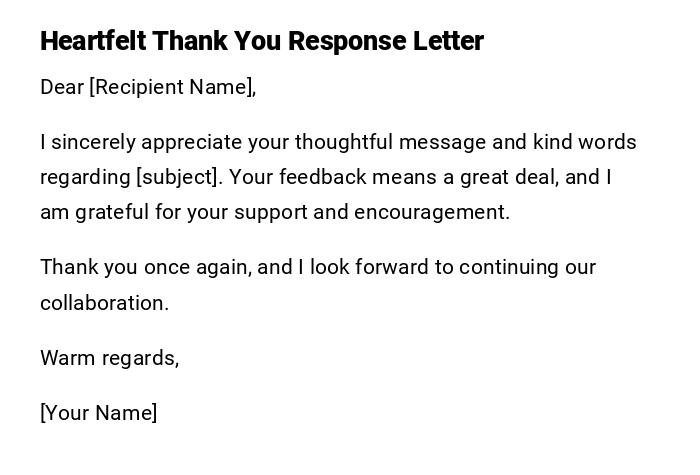
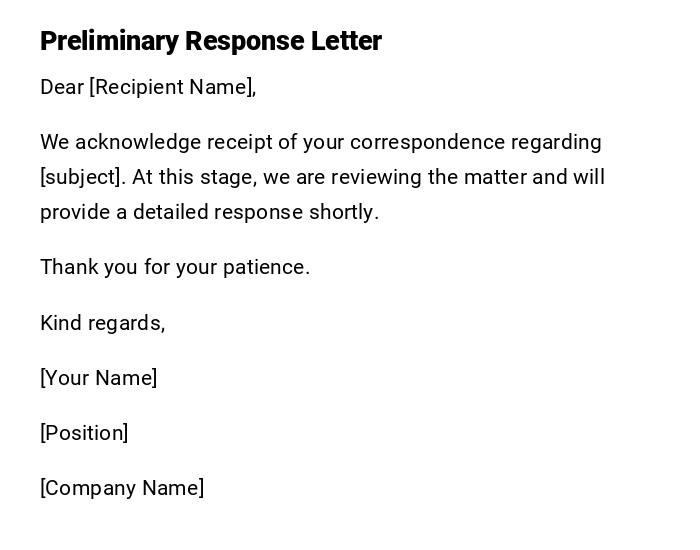
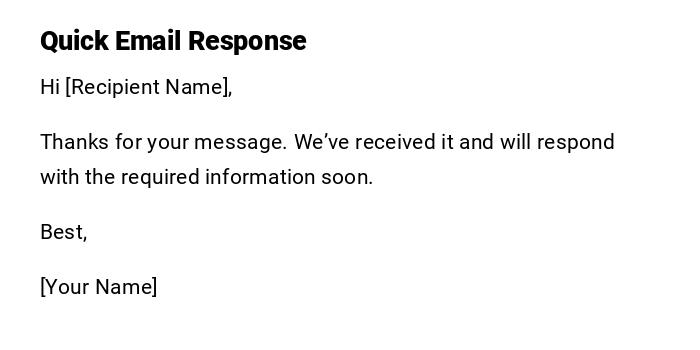
Customer Service Complaint Response Letter
Follow Up Letter After Interview No Response
Grievance Response Letter
Letter Of Financial Responsibility
Patient Complaint Response Letter
Response To Apology Letter
Response To Cease And Desist Letter
Response To Complaint Letter
Response To Demand Letter
Response To Invitation Letter
Response To Rejection Letter
Response To Rejection Letter After Interview
Response To Resignation Letter
Response To Termination Letter
Response To Thank You Letter

 Download Word Doc
Download Word Doc
 Download PDF
Download PDF